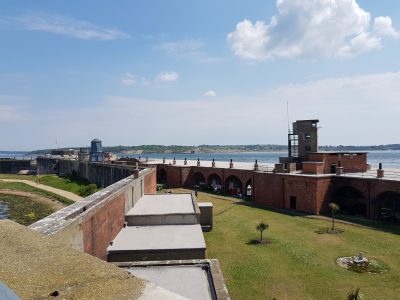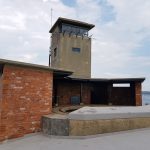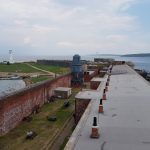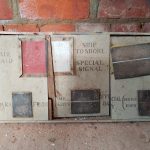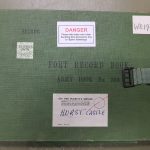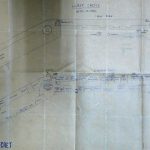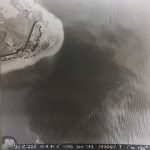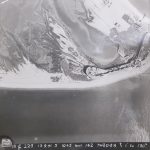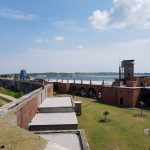Hurst Castle Directors Tower Project
Hurst castle is a coastal artillery fortress built by Henry VIII between 1541 and 1544. It is among the best preserved of Henry VIII’s castles and one of the few to have been successively updated and strengthened over time allowing it to retain an active military role throughout history. On the east and west sides of the original Tudor castle are two huge casemated wing batteries designed to house heavy guns. The roof of the castle’s west wing battery supports six 20th century superimposed structures: electric searchlight emplacement, shelter, east 12-pdr emplacement, battery command post, west twin 6-pdr emplacement and a director tower. Collectively, these structures are of high historical value because they illustrate how the castle’s defensive effectiveness was adapted and changed in the threat of World War II. Currently no contemporary documentation has been discovered which details these changes, which means that the physical evidence presented by the structures is the primary record of those alterations. Consequently the structures have high evidential value.
The Hurst Castle Fort Record Book from WWII is held in the National Archives WO192/288 A copy of the record book along with additional maps and pages are held at the NFNPA and can be requested.
In 2017 repairs to the roof of the west wing were carried out by English Heritage to waterproof and stabilise the structure. As a result, public access to the roof and its wealth of historic features is now possible for the first time. Existing infrastructure enables access to the western end of the roof via steps, and funds will enable a new walkway to be installed extending the visitor route across the roof. Funds will also be used to open up access to the interior of the 3-storey WWII director tower allowing visitors to appreciate and understand the castle’s unique strategic position in the Solent. As its name implies, the purpose of the tower was to provide elevated views for those directing the laying of fire by the guns. Access to the top floor of the tower will give visitors a new perspective of the Solent, across to the Isle of Wight and The Needles; neatly presenting the importance of the castle’s geographical position and its interrelationship with other fortifications. This also provides a spectacular vista of the New Forest National Park allowing visitors to appreciate the present role of the structure within the landscape. Separate funding will be sought to help source a replica range finder which would have existed in this location – the original plinth is still in position and would have housed a speaking tube for communicating with the floors below, and the rangefinder. New interpretation will be installed to explain the role of the structure throughout history and the bottom floor of the 3-storey tower will be improved and used as a small classroom leading to increased educational space.
Enhancing physical and intellectual access to the roof features will ensure that the heritage is in a better condition in the long term and people will benefit from improved interpretation and understanding during their visit. Visitors will have learnt about the castle’s heritage, the people who were stationed there during WWII and how this impacted and resonated into the local community. Volunteers will be involved in delivering new tours around this part of the castle and we will work with the National Park Authority to promote the new facilities as part of the walking festival, wildplay days, and education activities, for example. The castle is an integral part of neighbouring Keyhaven and Milford and provides unique value to these coastal communities.
Hurst Castle is a scheduled monument considered to be of national importance. It has highly specialised conservation needs and is owned by English Heritage but locally managed by Hurst Castle Ferries, a family-run business, since 1993. The castle is non-profit, and no financial support is provided by English Heritage. Many of English Heritage’s properties are managed in this way with local management providing a more effective method of ensuring that historic properties in guardianship can remain open to the public. English Heritage – a charity – has no plans to directly manage the castle but retains responsibility for repair and preservation of the castle and its structures in the long term. This enables Hurst Castle Ferries to focus on managing the day-to-day operations of the castle and responding to local needs.
As such this project is being supported by the National Lottery Heritage Fund through the Our Past, Our Future Landscape Partnership Scheme and the New Forest National Park Authority’s Sustainable Communities Fund.


